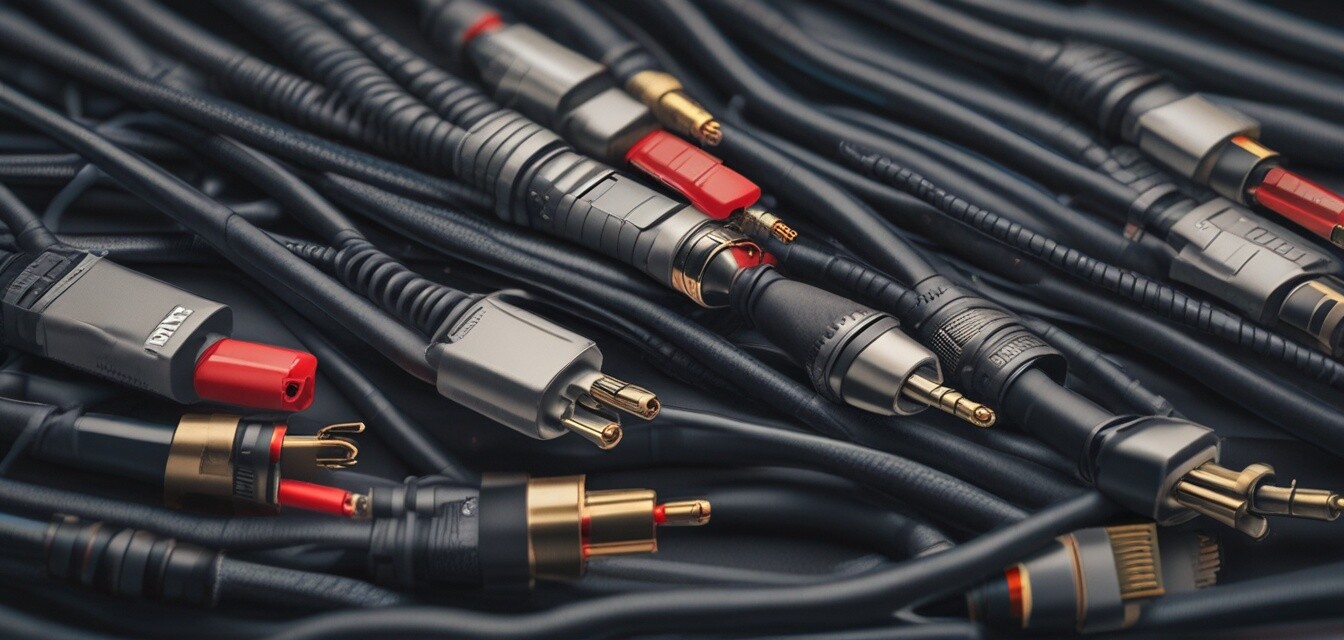
How to choose the best audio cables for your setup
Key Takeaways
- Understand the different types of audio cables and their uses.
- Consider compatibility with your audio devices.
- Quality of cables can affect sound performance.
- Invest in adequate shielding to reduce interference.
- Price doesn't always determine quality; research is essential.
Choosing the right audio cables can significantly impact the overall sound quality of your audio system. With various types of audio cables available on the market, understanding their uses, compatibility, and quality can be a daunting task. In this guide, we will simplify the process and help you make the best decision for your audio setup.
Types of audio cables
Audio cables come in various types, each designed for specific audio connections. Here's a breakdown of the most common options:
| Type of Cable | Use | Pros | Cons |
|---|---|---|---|
| HDMI | Video and audio signal transfer | High-quality sound; supports surround sound | More expensive; limited to specific devices |
| RCA | Analog audio connections | Widely available; affordable | Lower sound quality compared to digital connections |
| Optical | Digital audio connections | Minimal interference; clear sound transmission | Fragile; not flexible |
| XLR | Professional audio setups | High-quality, balanced sound | More complex; requires compatible equipment |
| 1/4 inch TRS/TS | Instrument connections | Good sound quality; common in music scenarios | Not suitable for all audio equipment |
Factors to consider when choosing audio cables
1. Compatibility with your devices
Ensure that the cables you choose are compatible with your audio sources and receivers. For instance, if you have a modern home theater system, you'll likely need HDMI cables. On the other hand, if you're working with older devices, RCA cables might be the better option.
2. Cable quality
Not all cables are created equal. Inferior cables can introduce noise and degrade sound quality. Look for cables from reputable brands and consider customer reviews to gauge performance.
3. Shielding
Opt for cables that offer adequate shielding to minimize interference from other devices. Shielded cables are particularly important in environments with many electronic devices.
4. Length and flexibility
When choosing cables, consider the length you'll need. Longer cables can sometimes result in signal loss, so opt for the shortest length that meets your needs. Additionally, consider whether you need flexible cables for easy installation and management.
Price vs. quality
While you might think that higher-priced cables are always better, this is not necessarily the case. It's essential to research and find the right balance between cost and quality. Just because a cable is expensive does not guarantee superior sound quality.
Conclusion
Choosing the right audio cables for your setup is crucial for optimizing sound quality and ensuring compatibility with your devices. By understanding the different types of cables, considering their quality, and comparing prices, you can make an informed decision that enhances your audio experience.
Pros
- Enhances audio performance with the right cables.
- Wide variety of cables for different uses.
- Affordable options available for every budget.
Cons
- Quality cables can be expensive.
- Complexity in understanding different types.
- Potential for signal loss with longer cables.
Further Reading
If you're interested in learning more, check out our other buying guides to help you navigate the world of audio equipment: